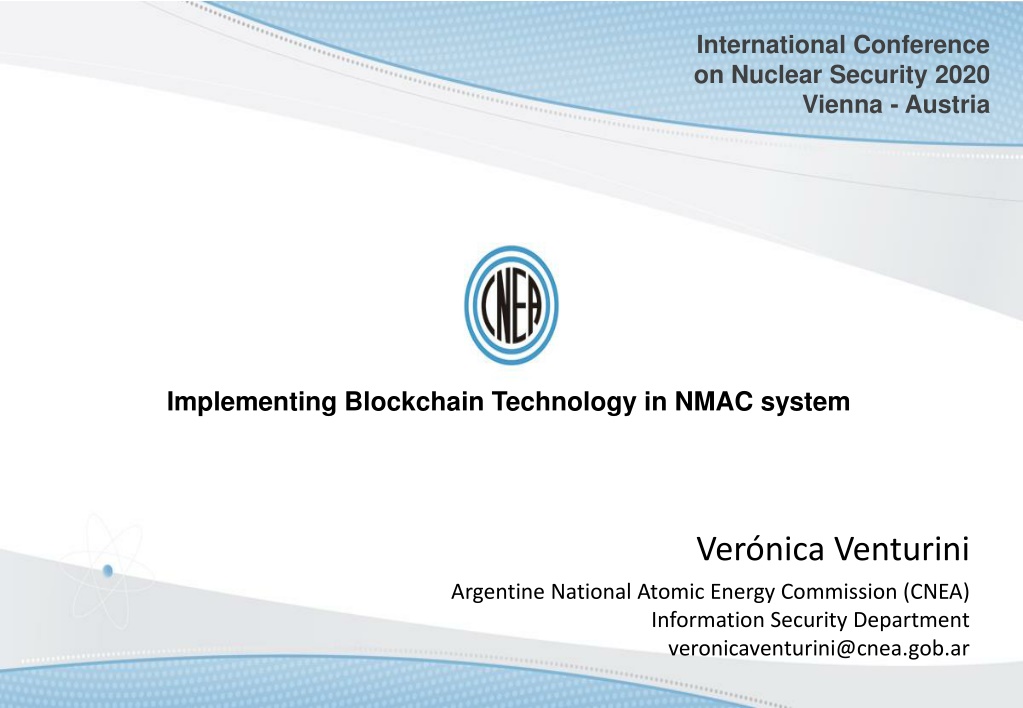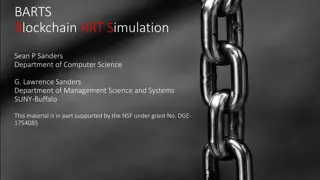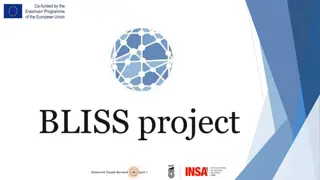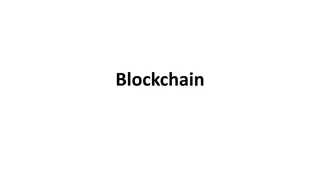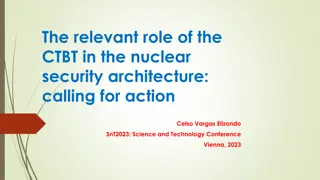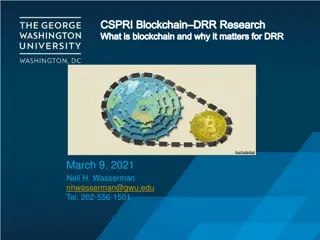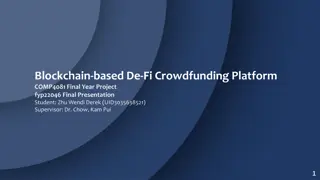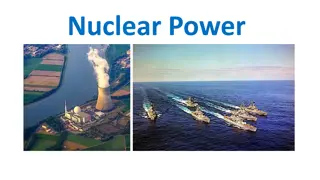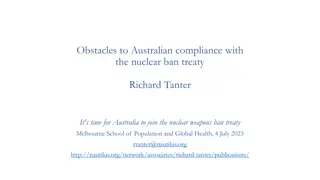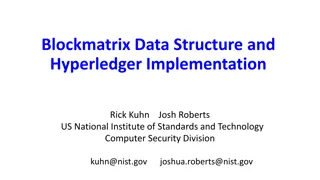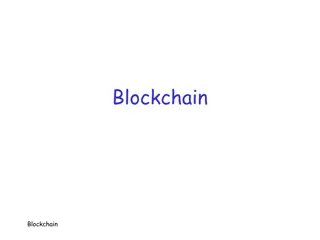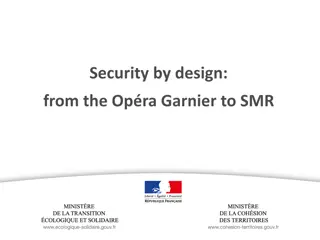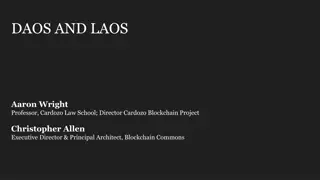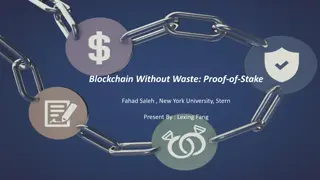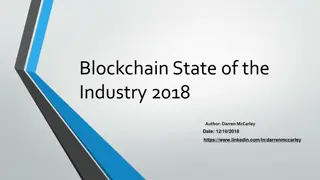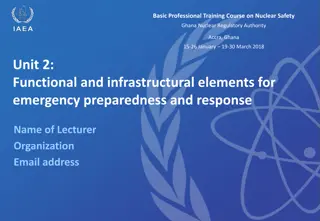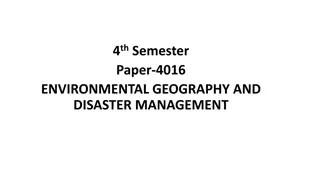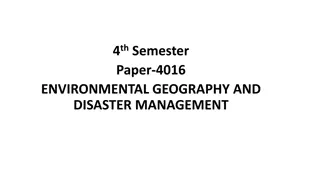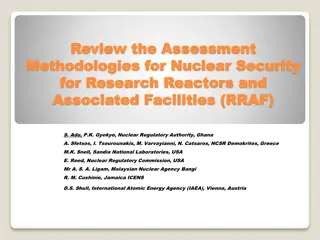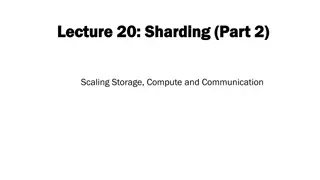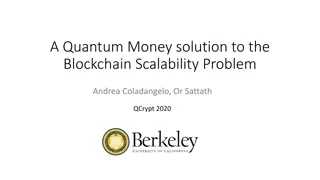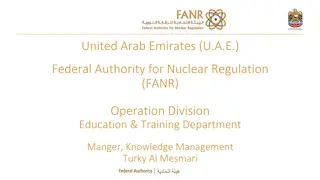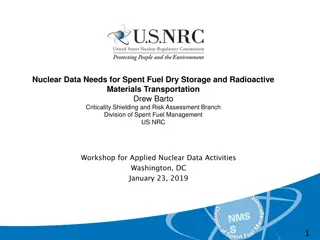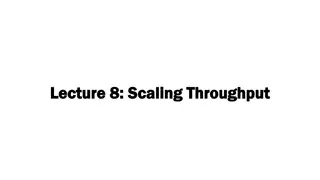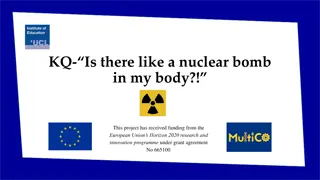Implementing Blockchain Technology in Nuclear Security: NMAC System Overview
Emerging technologies like blockchain are being applied in nuclear industries for transparent control of nuclear material movements. The NMAC system utilizes blockchain to ensure secure transactions and data management. Explore its design, objectives, constraints, and use cases within the nuclear security context.
Download Presentation

Please find below an Image/Link to download the presentation.
The content on the website is provided AS IS for your information and personal use only. It may not be sold, licensed, or shared on other websites without obtaining consent from the author. Download presentation by click this link. If you encounter any issues during the download, it is possible that the publisher has removed the file from their server.
E N D
Presentation Transcript
International Conference on Nuclear Security 2020 Vienna - Austria Implementing Blockchain Technology in NMAC system Ver nica Venturini Argentine National Atomic Energy Commission (CNEA) Information Security Department veronicaventurini@cnea.gob.ar
Introduction Motivation Emerging technologies have focused on blockchain technologies. Review of possible applications in the nuclear industries. Objectives Ensure transparency transactions in control of nuclear and radioactive material movements. Contribution The implementation of the NMAC system using blockchain.
Introduction Art of State Cryptocurrencies Energy distribution from smart grids Finances and property rights Organizations such as DARPA (United State) or Rosatom (Russia) invest in R&D on blockchain to safeguard military assets and in nuclear energy respectively.
Blockchain Blockchain characteristics Blockchain constructs a chronological chain of blocks, hence the name "block-chain". Each block is an immutable information unit. Blockchain consists of timestamping of transactions, Peer-to-Peer networks, cryptography, and shared computational power. Components: data model, transaction language, consensus algorithm. Smart Contracts: automatic execution code.
Use case: NMAC System Scenario A new set of fuel rods arrives to the facility. A custodian named John Muller receives the set of material. He must login in a web page that allows him to specify the type of source transaction. In this case, the transaction is record new sources. These transactions are registered blockchain with a timestamp specification. Then, at the moment when the fuel rod replacement occurs, Muller has to write this new transaction in the nmac-blockchain. in the nmac- Movements: Shipment Receipt Transfer Relocation 1. 2. 3. 4. 5. 6. 7. 8. 9. Nuclear Reactor Core Storage Enclosure Maneuvering Pool Waste Disposal Pool Laboratory 1 Reception Waste Disposal Facility Enclosure 1 Enclosure 2
Use case: NMAC System Constrains by design Separation of duties should be maintained to ensure that the same person cannot both transfer and receive the nuclear material. Radiation should be measured before and after each movement: the present architecture eludes that verification.
NMAC System: Design Participants Regulator: Monitoring source movements, audit the blockchain. Nuclear Material Custodian: Source/Nuclear Material Check in, Source/Nuclear Material Check out, Relocation of nuclear source, Adding source to the blockchain and Adding new location. Assets Nuclear Material Transactions 1) Add sources, 2) return a list of sources, 3) request information about a particular source, and 4) modify the source s custodian. Channels Are the communication buses between participants.
NMAC System: Design A block structure in the nmac-blockchain BLOQUE Timestamp Regulador ARN Custodio 1 Hash anterior ID_Material ID_Responsable Ubicaci n geogr fica del material Custodio 3 Estado del material Custodio 2 Peso del material Nonce Verificador Secretar a de Energ a
NMAC System: Design Representation of a previous hash. BLOQUE 00 BLOQUE 01 Timestamp Timestamp Hash anterior Hash anterior (Bloque 00) ID_Material ID_Material ID_Responsable ID_Responsable Ubicaci n geogr fica del material Ubicaci n geogr fica del material Estado del material Estado del material Peso del material Peso del material Nonce Nonce
NMAC Blockchain: Proof of Concepts Nmac-app
NMAC Blockchain: Proof of Concepts Hyperledger Explorer
NMAC Blockchain: Proof of Concepts Hyperledger Explorer
Conclusions and Future Works Conclusions Nmac-blockchain could improve the current NMAC system. This technology bring transparency to nuclear material movements between facilities and different countries. Nmac-blockchain reduces costs and delays in the regulator s processes and enhances the security of the information assets helping avoid possible sabotages. Futures works We are going to implements more blockchain peers and evaluate the behaviour and performance of the nmac-blockchain with a large number of concurrent transactions. Improve the user experience.
References 1. IAEA Nuclear Security Series N 32-T. Establishing a System for Control of Nuclear Material for Nuclear Security Purposes at a Facility during Use, Storage and Movement. Technical Guidance. International Atomic Energy Agency, Vienna (2019). 2. AR 10.16.1, Rev. 3. Transporte de Materiales Radiactivos. Autoridad Regulatoria Nuclear, Argentina (2016). 3. An lisis del Ciclo de Combustible Nuclear Argentino. Furlano L., Marino A. C., Comisi n Nacional de Energ a At mica. 4. Aspectos b sicos de blockchain: Hyperledger Fabric e Hyperleger Composer. Maheshwari S. IBM, developerWorks (2018). 5. Blockchain for dummies, 2nd IBM Limited Edition. Brand W. (2018). 6. Blockchain for Business - An Introduction to Hyperledger Technologies. EdX curses (April, 2019).
Implementing Blockchain Technology in NMAC system Questions? Thanks for your attention.- veronicaventurini@cnea.gob.ar
